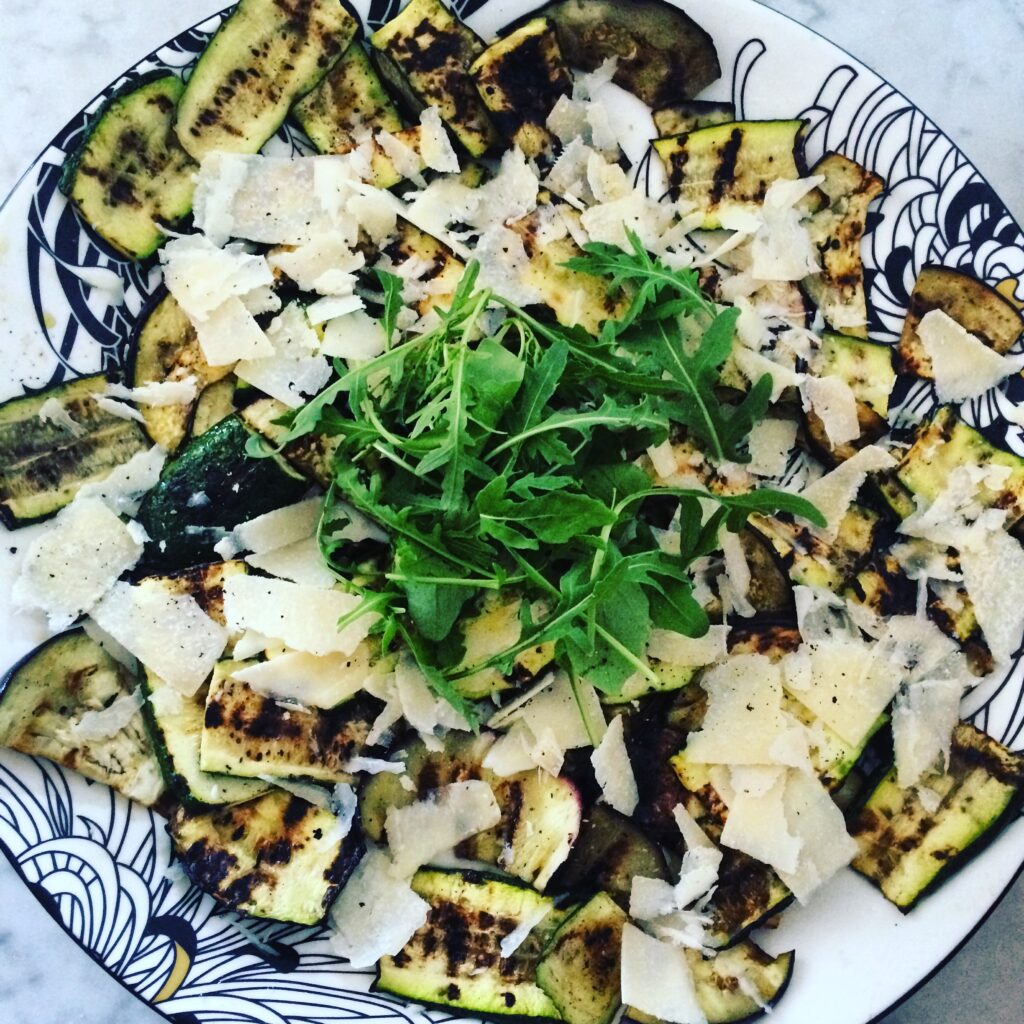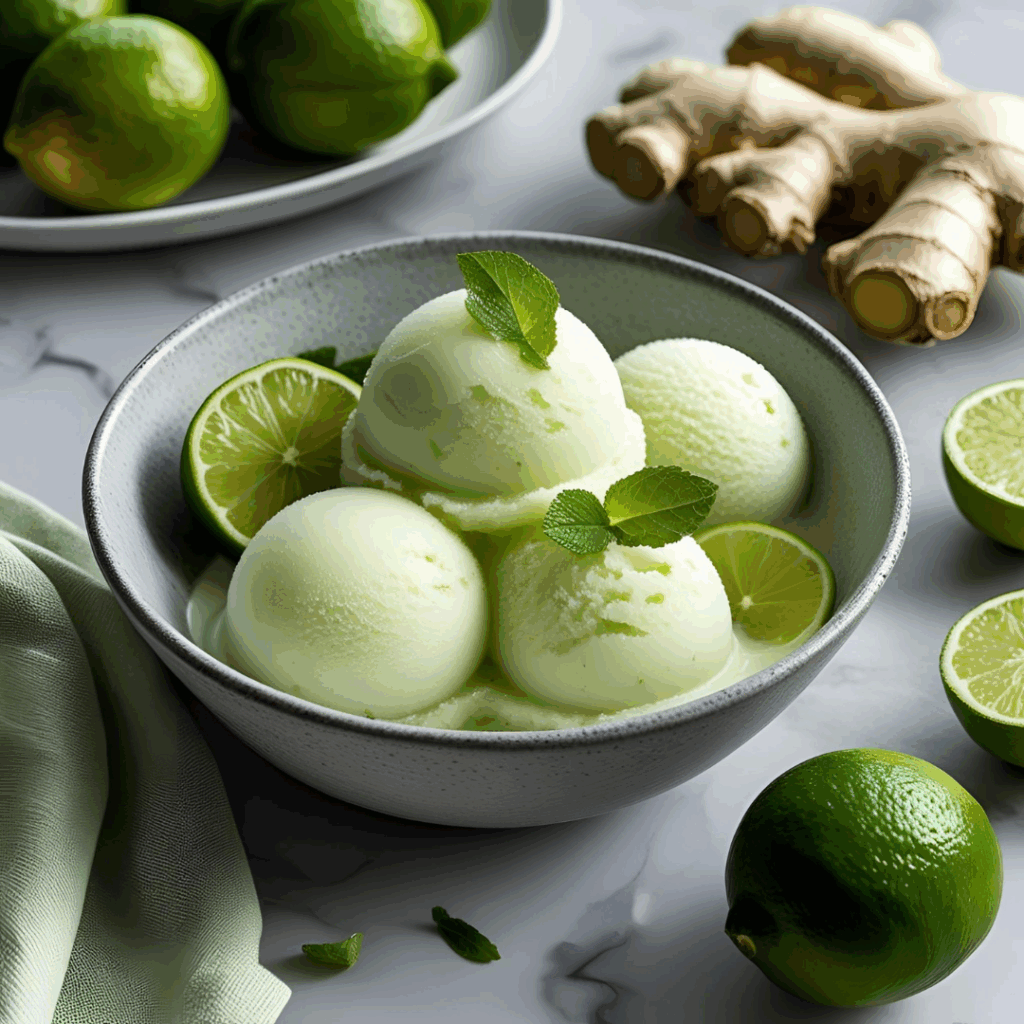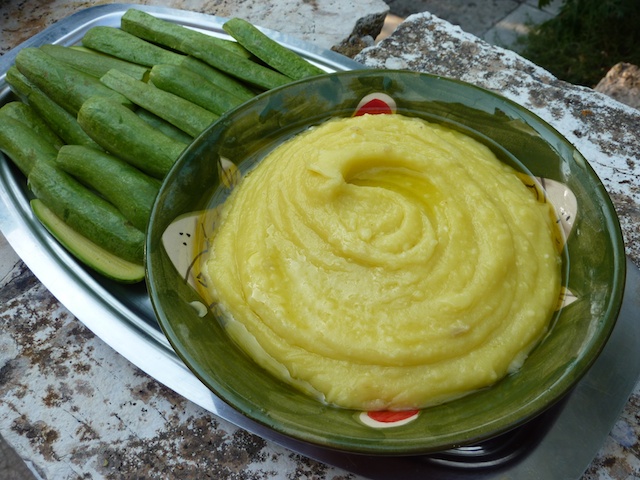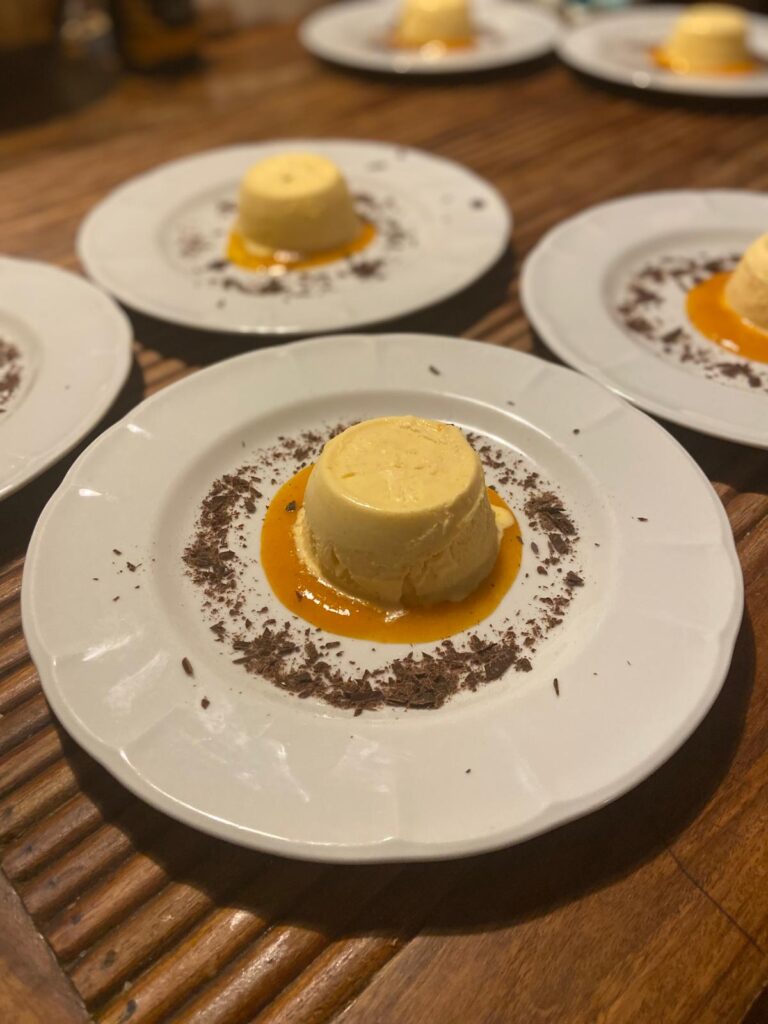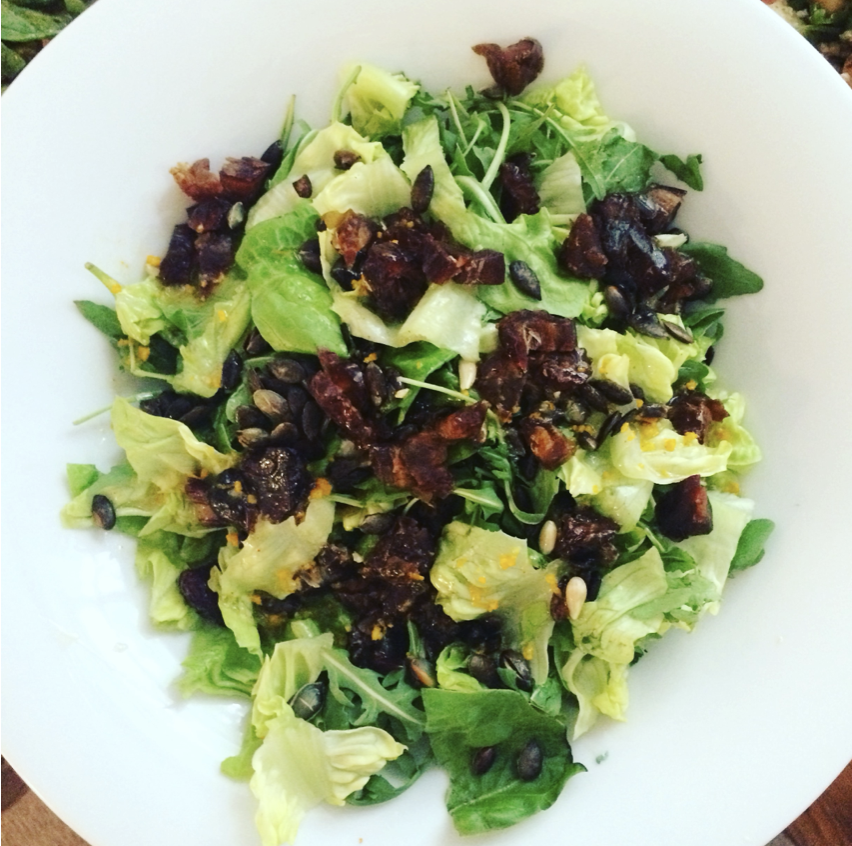A week cooking with Grannies at The Calabria Food Festival
Recently, Livia and I attended the Calabria Food Festival to scope out future locations, recipes, and contacts for future Pasta Grannies content. And what a delicious place it was! We’ll definitely be back!
Calabria is something of a mosaic in terms of history. Much of the architecture is Grecian, and the land and buildings have many magical myths associated with them. Dramatic, rolling hills and deep, dark forests, alongside some of the most crystal-clear coastlines I’ve ever seen, slot together like an unlikely natural jigsaw. And the culinary scene is much the same. Fresh seafood, delicate aubergines, smooth, soft cheeses, and spicy sausages are to be found in bucket loads, alongside some of the most vibrant fruit I’ve ever seen at local markets.
At various points in time, the land has belonged to many Latin and Spanish influences, which is reflected not only in the high presence of chilli peppers (sometimes Calabria is referred to as the ‘Mexico of Italy’) and the types of dishes in their cuisine, but also in terms of the language.
While we were away, we met quite a few nonnas and chatted to them about their cooking experiences and their Calabrian lifestyle.
Out of the pan, and into our mouths with Nonna Rina
On the first night, we undertook an antipasti masterclass with Rina, who taught us about the various fritti commonly served in Calabria. The class took place in the garden of Tropp Pizzeria and Microbrewery with live Taranta music while we allowed the sound of the lute, the beautiful sunset, and chirping birds across the leafy green mountains behind wash away our tiredness from the long journey to get there.
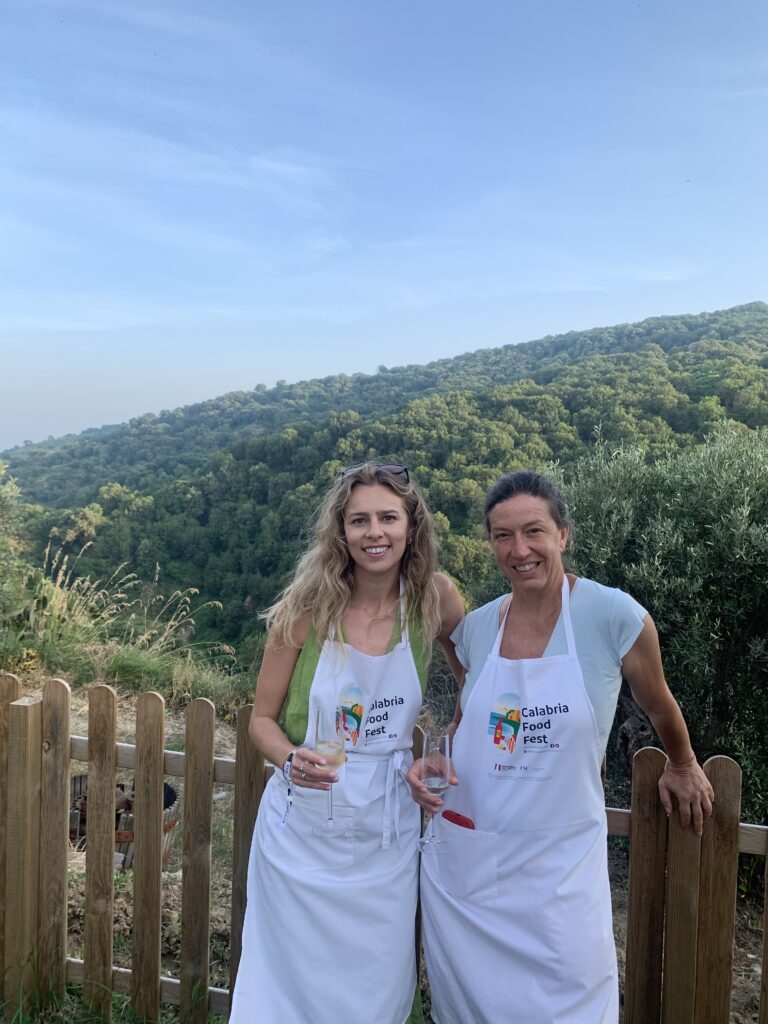
Nonna Rina is a something of a professional cook herself (with three cookbooks under her belt) and cooks for her four children and their children, as well as regularly with others in the village and cooking classes and events. She’s glamorous; sports colourful eyeshadow, and bright green and blue dresses on every occasion. And it wasn’t just for the events she ran with us — we even bumped into her in town at the market day, where she was looking suitably fabulous once again.
Later in the week, she attended the opening of the Castle of Squillace with us, and in true nonna style, took me under her wing (i.e. attached herself to my arm for the duration of the evening) and tried to introduce me to everyone she knew from the village — especially all the young, eligible men! With a cheeky smile and a dab hand with a frying pan, we know she’s the kind of nonna you Pasta Grannies fans would love.
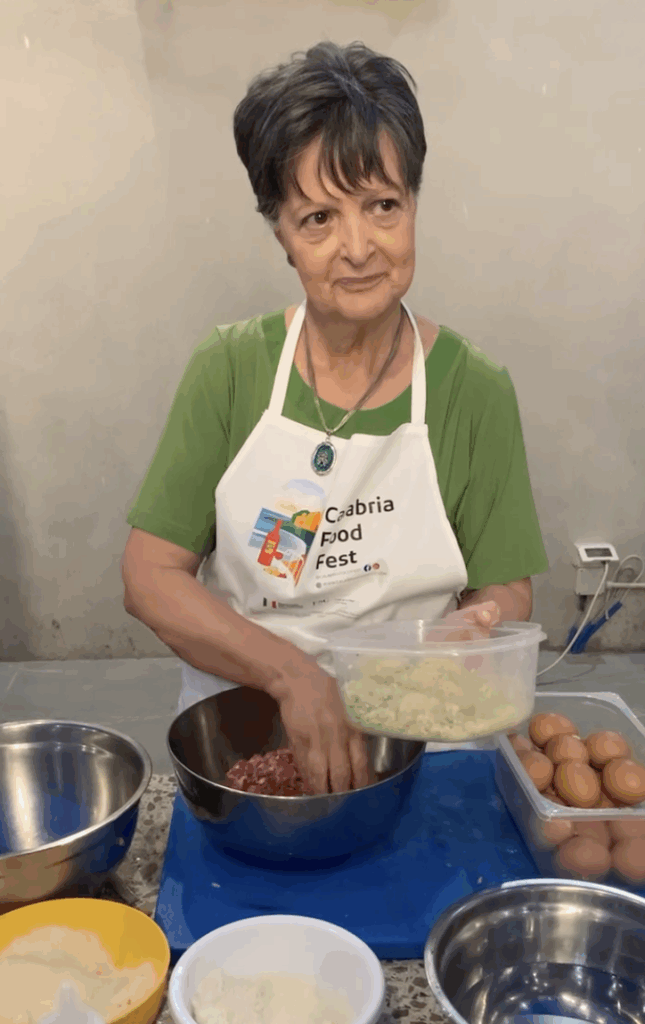
Her zzippuli are already live on the website, and we also recorded the recipes for her crocchette (potato, rice, meat) as well as my favourite: her provolone-stuffed aubergine (melanzane ripiena). She gave me top marks for my attempt, even though I thought it could have been a little neater! Plus, she proved the versatility of fritture with a sweet edition of cannariculi drizzled with local honey. It had a subtle flavour of aniseed within the dough as there was some wild fennel mixed through the dough, warming and bringing the flavour to a more full-bodied sweetness. I’m dreaming of serving these on top of some full-fat Greek yoghurt with berries as a summer dessert.
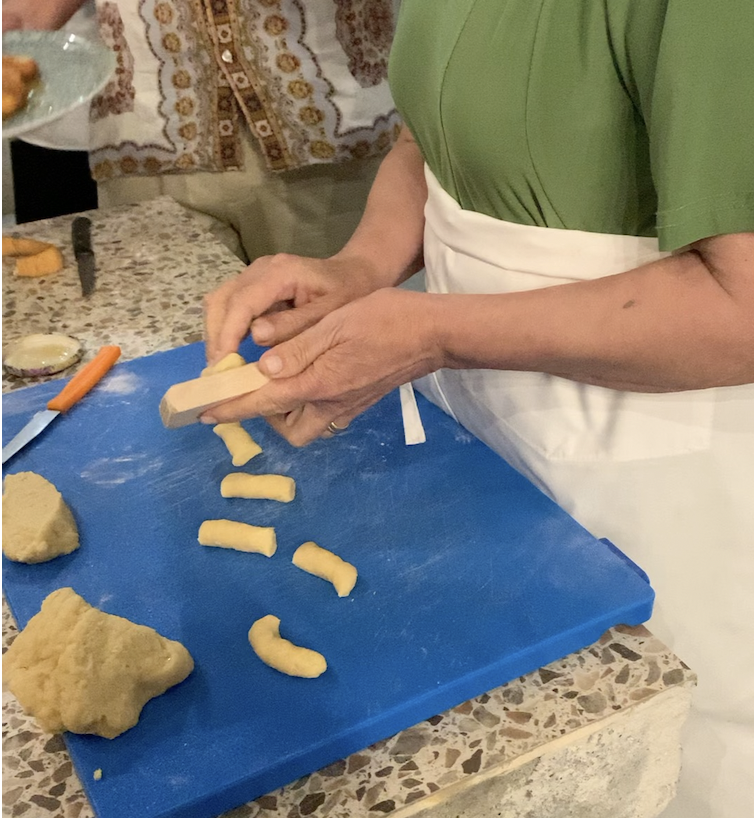
Breaking and baking bread with Nonna Franca
On our third day, we went to the Guardavalle area and visited a grain farm before stopping at Agriturismo Fassi for a bread and pasta masterclass from Nonna Franca. The agriturismo is bejewelled with cactus plants, and the colourful flora growing provides a vibrant backdrop to the mellow hues of neighbouring fields visible from benches in the small hut outside the agriturismo’s entrance.
Shading from the blistering thirty-something-degree sun, I sat here with an espresso, sipping in the view framed perfectly by the outposting structure before getting ready to roll up my sleeves and get stuck in with making bread and pasta.
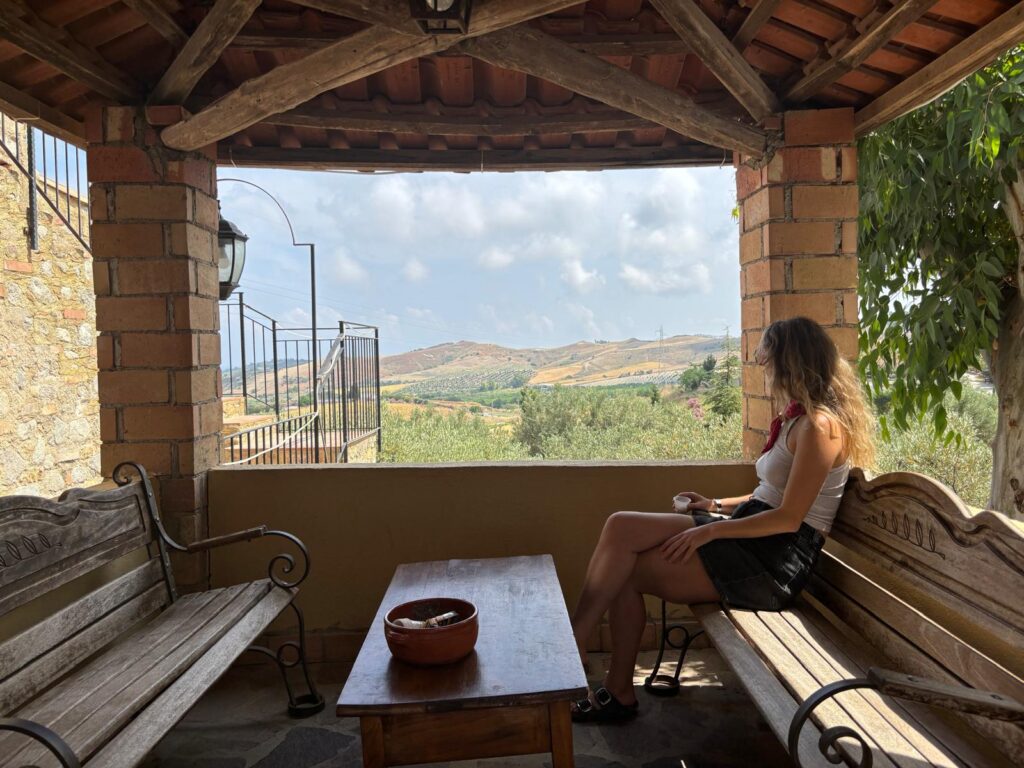
During our visit, Nonna Franca told us about the enzymes used in the bread, and how this is something which varies family to family. With her specific recipe, we tried making our own pane di Cutro, made with durum wheat semolina flour, which is naturally leavened. Rolling into small, perfectly round little balls, we got her input on our technique. For me, she told me not to be so afraid, to really go for us and give it a little more oomph! I listened and my bread vastly improved. Nonna really does know best.
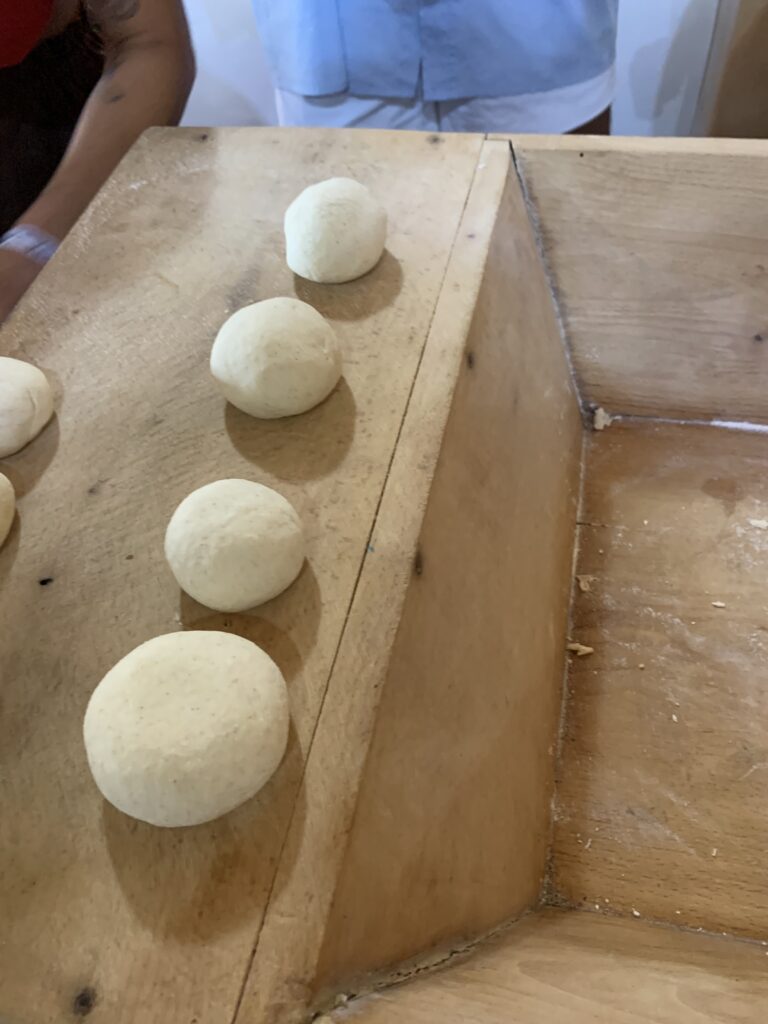
We later got to sample this bread with our lunch, as well as their pane di Cosenza, which has a nutty, earthier flavour and darker colour due to the blend of wheat and chestnut flour.
The Italian alphabet doesn’t have a ‘j’ in it — except in Calabria, where the local dialect names foods like ‘nduja’, and their most famous pasta shape, ‘fileja’, a loosely wound maccheroni often made by wrapping the dough around greja, a stick. The final pasta shape shouldn’t be perfect; there should be some gaps or slight mis-uniform in the structure (these are great for soaking up that extra sauce!).
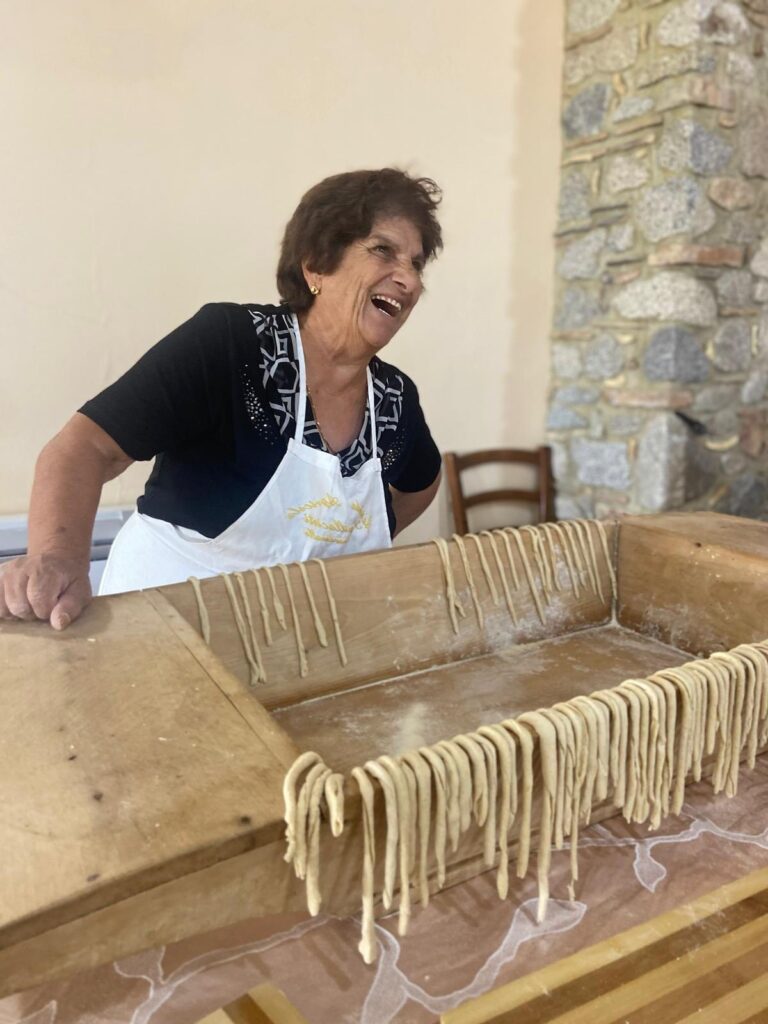
Much like the ancestors who came before her, Nonna Franca is still using traditional equipment alongside the modern machinery on the farm used to harvest and prepare the grain. She mixes her flour and water in something called a maidda, a large wooden trough with flat sides for rolling and edges for hanging pasta. Unlike some of the maccheroni ferrati we’ve seen in other regions (made using iron rods), here the sticks are often ears of wheat or corn from neighbouring farms.
We didn’t sample the pasta this lunchtime because instead they put on a phenomenal spread of the farm’s vegetables, antipasti, and cheeses, allowing us to taste all the various breads. When we spoke to Franca, she suggested pairing the fileja pasta with a classic pomodoro sauce — and said the trick to getting it right is cooking it for a long time (the sauce, absolutely not the pasta!).
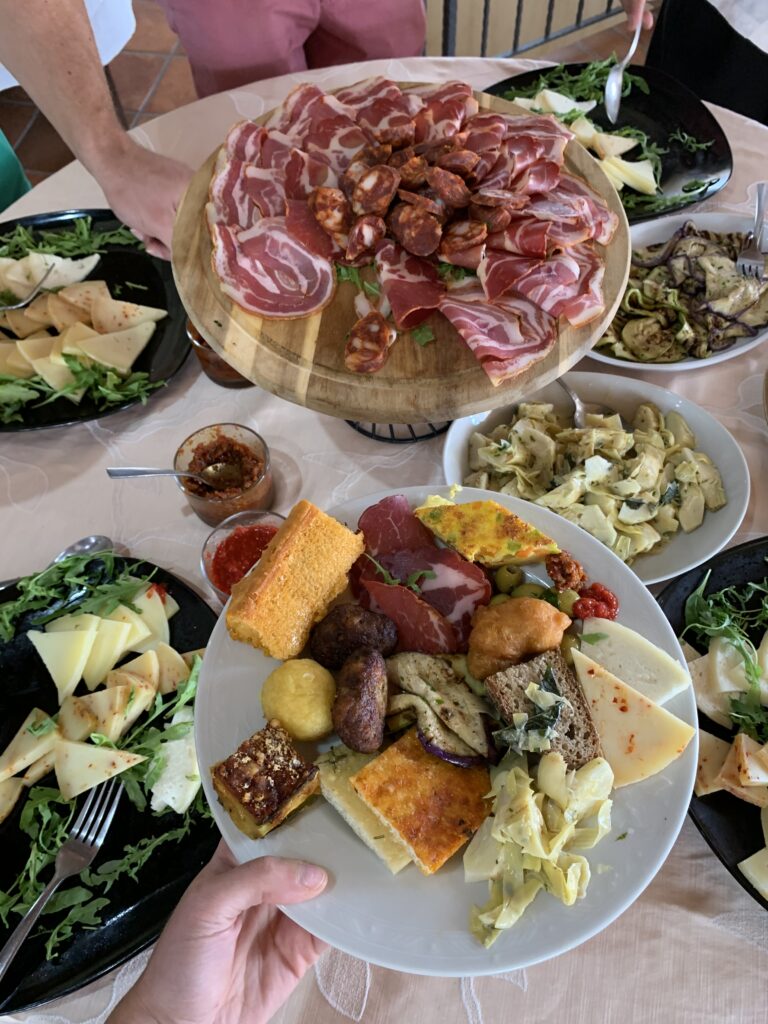
Joining the band with the ‘Spice Girls’ of Dasà
Our third nonna-cooking experience later in the week was a real event. It saw us drive up to the Vibo Valentia province. On the way there, you wind through stark, striking tall forests with brooding canopies and mountain-fresh fountains ready for drinking. Yet, out the side, you’re in the warm, sleepy, and smiley town of Dasà.
At first glance, it appears deserted — in parts almost derelict. The pizzeria sign above the blooming bougainvillea hasn’t lit up for years, and there isn’t a soul walking the streets — until you hear the gentle tinkling of taranta music from a cobbled stone building.
There is at least one spot to eat in this village, and it turns out absolutely everyone is there. On arrival at the Taverna, Eva and Harper — a cross-continental couple who run the experience (Eva is originally from the village and Harper is from Maine, USA) — let us know that today we are not tourists, but guests, and we’re about to join their huge, crazy family. It definitely was a little crazy and they really did welcome us in as if it were their own living room.
As we cross the threshold and the music becomes a good eight decibels louder thanks to the stone-based echo reverberating off the walls, we are greeted by five of the best cooks in the village: Franca, Antonietta, Maria, Domenica, and Pasqualina — locally known as ‘The Spice Girls’. They show us how to make maccaruna.
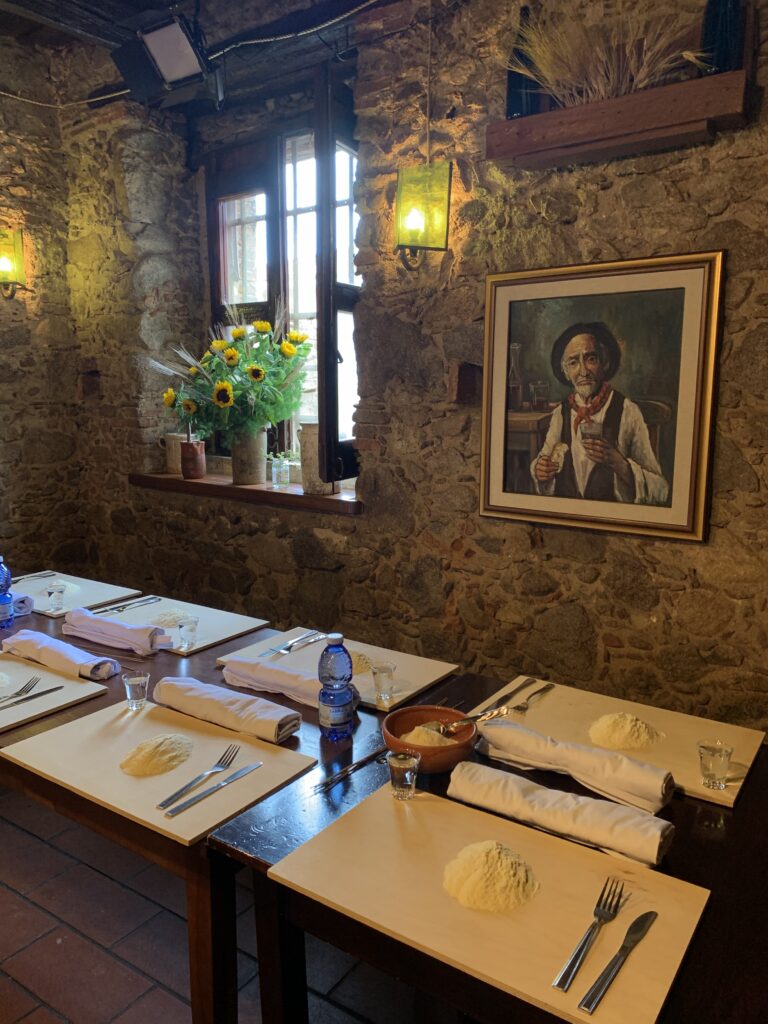
As the music speeds up, and the entropy in the place rises with more of the village coming to spectate on our pasta-making ability. Somehow this helps us vastly improve. Similar in technique to the fileja we made with Nonna Franca, this pasta is also made by rolling into long, thin sausages, cutting them into small pieces, and then wrapping them around a stick to create the shape. However, the goal with this one is to get it as neat, long, and thin as possible. Livia was a natural, and I’d say I won “most improved” over the course of the afternoon.
After a short tour of the village and the old water mill, we were treated to a huge family-style spread with fresh ricotta, pipi e patate (potatoes and chillies), as well as bread and different frittelle. The peppers were really quite hot, so the ricotta was the perfect antidote.
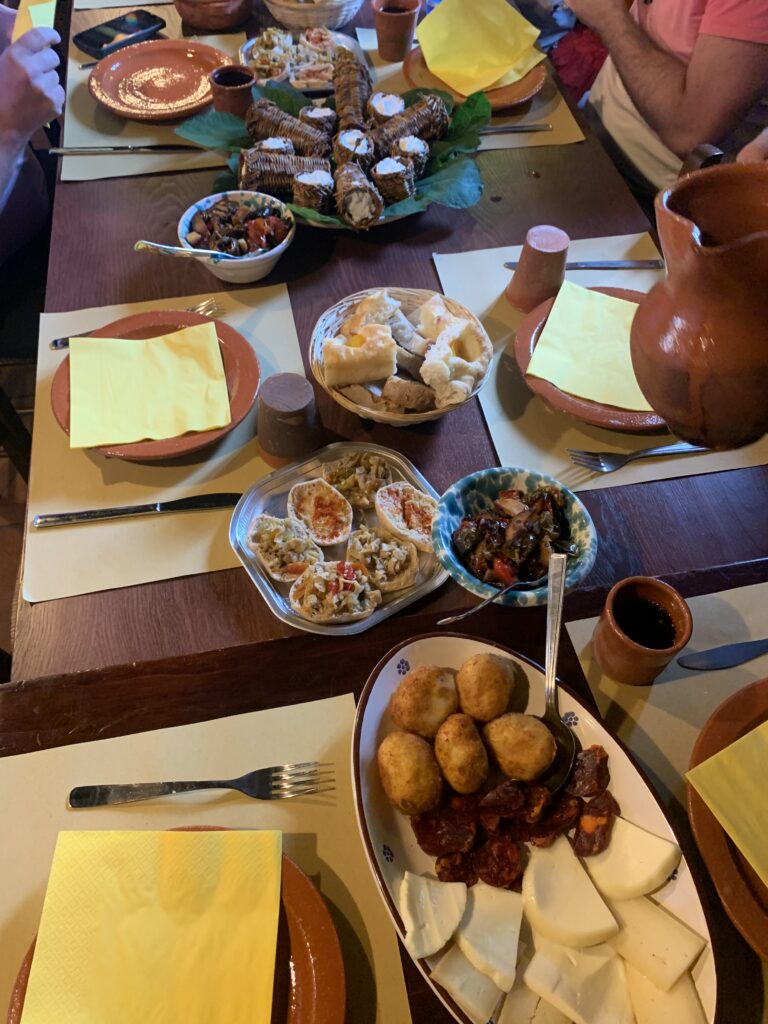
When cooking for a whole village, the pasta is something of a military operation, with all five nonne needed to chip in to lift and stir the pot. The sauce was prepared in advance and was a pomodoro with spicy Calabrian sausage (‘nduja), typical of this region. We asked them about their recipe while making it. And while filming, we really got our sweat on! Nothing but respect for these nonne who were doing all the heavy lifting too. And of course, the meal wasn’t complete without a few glasses of Cirò red wine, brewed locally which helped me nod off to sleep nicely on the long and winding road back to the hotel.
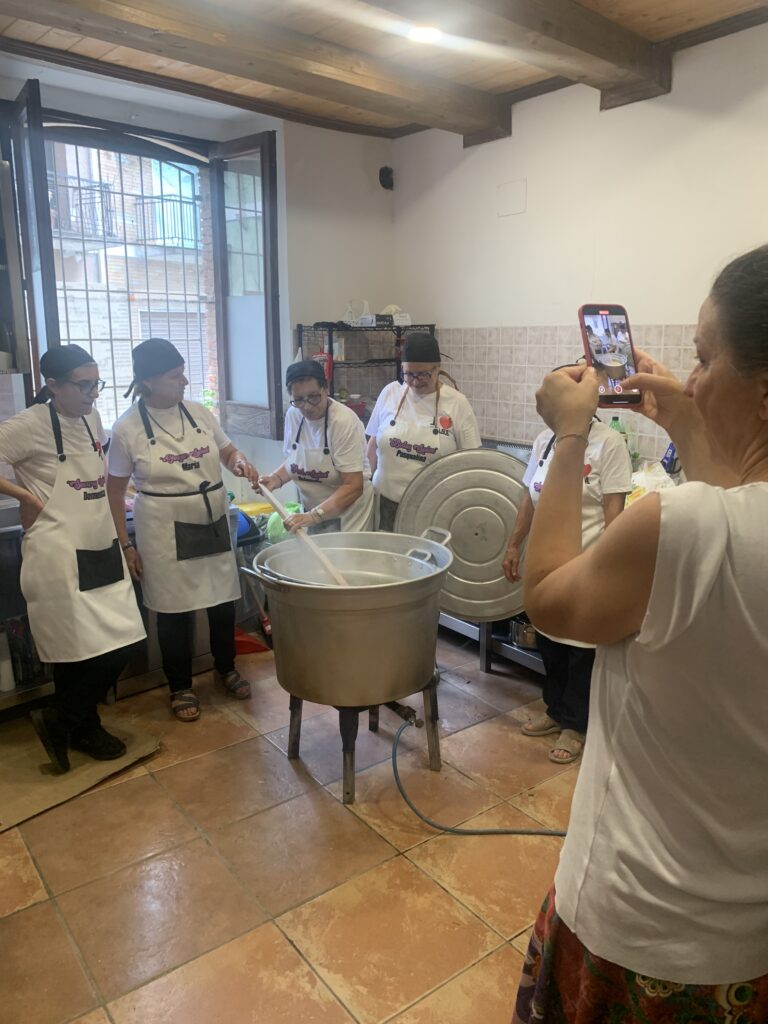
Leaving with a very good taste in our mouth
All of these nonna cooking experiences were unique and original in their own way, much like the nonne themselves. It’s clear to me, that here in Calabria, they’re happy to uphold their traditions and proud of their cucina povera (poor kitchen) roots — a type of cooking that favours taking humble ingredients and delivering in a big way; they value resourcefulness and efficiency in their methodology without compromising on taste. And compromised, it certainly was not.
We’ll definitely be re-creating some of these dishes at home and will write up some of these recipes on the Pasta Grannies site soon too!
With huge thanks to Calabria Food Festival for the invitation to the week, Nonna Rina, Nonna Franca, Eva and Harper for organising the visit to their taverna with ‘The Spice Girls’. If you liked the sound of these experiences, you can contact Sognare Insieme Viaggi to organise your own jam-packed, open-handed, and warm-hearted visit to the region.
